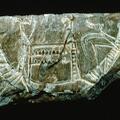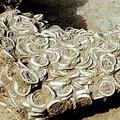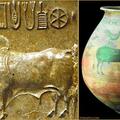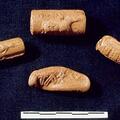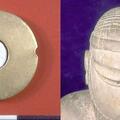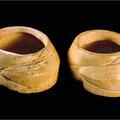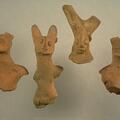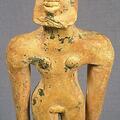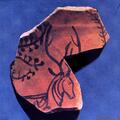Indus-style Boat
The nautical historian Basil Greenhill makes an interesting point about why this boat style may have endured on the Indus: "As for the punts [long, narrow, flat-bottomed boats, square at both ends and propelled with a long pole, used on inland waters chiefly for recreation], their silhouette bears perhaps some resemblance to that of the boat depicted in one of the two scribings of boats found at Moenjo Daro, the Indus civilization site which lies on the west side of the river roughly in the center of the long stretch of the Indus on which these boats are to be found today.

